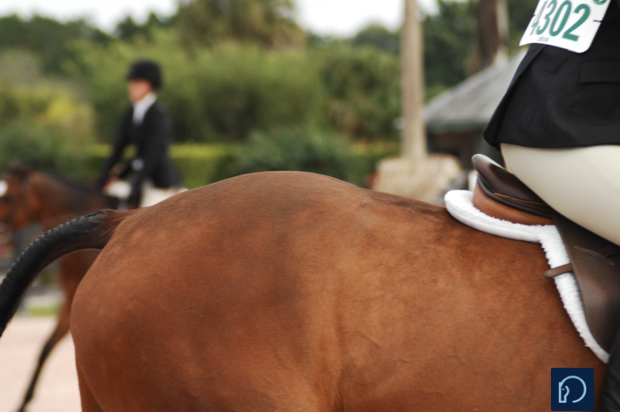As of February 2019, the United States Equestrian Federation (USEF) has approximately 66,000 competing members scattered across 29 different breeds and disciplines*.
The German National Federation, in comparison, has well over 690,000 members in a country that is 25% the size of the United States population wise. (And one that is a frequent stop for many American riders who flock to Europe to participate in healthy sport.)
Given that a 2017 economic impact study by the American Horse Council estimates there are over 38 million horse enthusiasts in the United States, it begs the question: why aren’t more of them joining USEF and competing?
Let’s take a look at USEF’s flagship product: the A-rated show.
The easy answer is that the price of this product has skyrocketed and only the wealthiest 66,000 of the 38 million can afford to make it all the way to that stage. Simply put, we’re pricing out the majority even within our ranks.
One way to lower the price of a product is to allow more than one competitor to enter the market.
Currently, the USEF only allows one A-rated horse show per 125 miles in any given week. Keep in mind, horse shows are run by for profit business owners and customers become less price sensitive when there is only one game in town.
Imagine if the National Association of Realtors only recognized one real estate agent every 125 miles. That lucky agent could raise his or her prices with relative impunity.
A consequence of this practice is that “owning a date” has become big business for the exclusive access it guarantees (only one A-rated in a given territory eliminates competition). Once you own a date you don’t even have to put on a horse show. Common practice is to lease the date to another provider and let them put on the show. You can even charge an event to compete against you because they need your permission to do so. Eventually you could sell the date. In some cases, dates are left in wills and successfully passed to their heirs. Not joking.
None of these practices will lead to affordable horse shows.
But don’t blame the A-rated show manager. They are just good business people who have found a lucrative business opportunity—in some cases, incredibly lucrative.
How does USEF decide who gets the permit for the A-rated show? Many want it. But typically only one is issued per territory (see: permission practice above).
The answer is that the USEF handpicks who USEF wants. The Federation Internal Review Panel, a committee that consists of just three people—the Federation Chief Executive Officer (or his designee), the Director of Competitions, and a staff member from the relevant breed or discipline chosen by the Sport Director—chooses which events are awarded a date and for how long.
In practice, dates are generally given to the same small group of people who have had them for decades. And very often they pick people within their own organization, people on their committees and boards. The USEF Competition Management Committee, for example, appears to include 12 horse show managers among its 19 members.
The problem with this approach is the USEF is effectively awarding monopolies over a territory, so regardless of who they choose, it’s going to be a high-priced product. In a free market, the role is reversed. The consumers pick which business they want to support, putting the onus on the show to deliver more competitive pricing and higher quality products.
As a consumer of A-rated horse shows, I WELCOME a new business owner who wants to try and deliver a better product at a lower price. Healthy business competition is the best way to create better products and services. Horse show managers would be pushed to produce the kind of events you just couldn’t miss, provide so much value you had to load up the trailer and be there, and to introduce innovative formats you had to see for yourself. We won’t get there by using the same horse show managers and formats over and over again.
What’s more, competitive monopolies are not a practice we see in other sects of the industry. Horse trainers have to keep their prices in line with the competitor down the street. Why shouldn’t A -rated horse shows be held to the same standard? I can’t really think of any other situation where an organization as powerful as the USEF intervenes and interrupts what should be a free market. Maybe you can.
I asked USEF Competition Licensing Coordinator Katherine Faust why they restrict and handpick who gets permits to put on A-rated shows. She said it was in order to “keep the competition pools healthy.” That is an is admirable goal, but in my mind their focus is off.
I believe our national federation should be focused on growing membership on a national level—the USEF should have one million members. That would keep competition pools healthy. At just 66,000, it feels like an endangered sport. There are more Narwhal Whales (an endangered species) than there are USEF competing members.The United States Tennis Association has approximately 700,000 members by contrast.
Furthermore, the principles of supply and demand are fully capable of equalizing the number of competitors and competitions naturally and better than any outside governing force can.
I respectfully ask that the USEF Board of Directors review the mileage rule and consider eliminating it to allow free market economics to naturally produce a better A-rated horse show.
Brian Wee has started a petition on Change.org to address these concerns with the USEF. At the time of print it had over 500 signatures. Click here to access the petition.
*According to an email from Communications Director, Julian McPeak
 About the Author
About the Author
Brian Wee is a Certified Financial Planner who specializes in working with equestrian business owners. Learn more at brianseanwee.com.




 March 1, 2019
March 1, 2019 





















